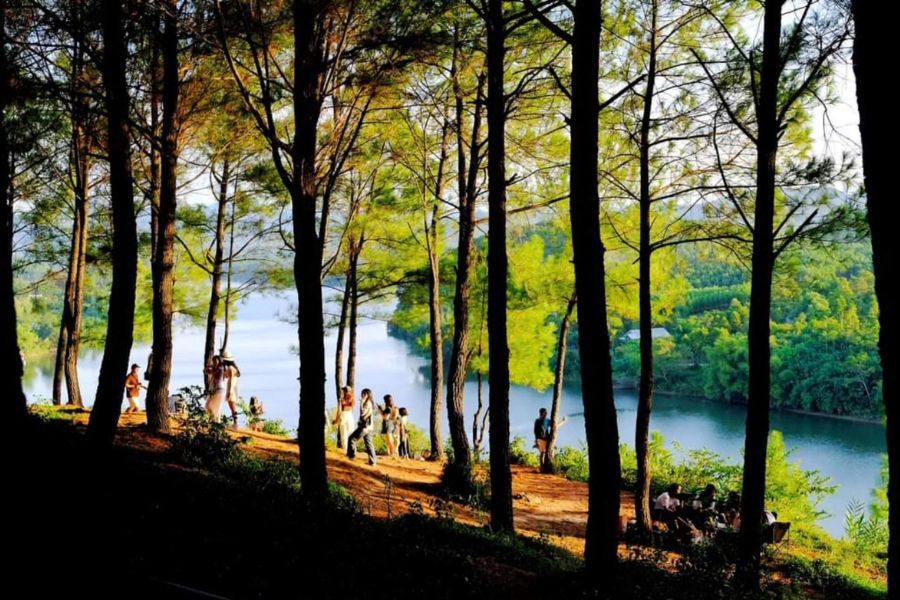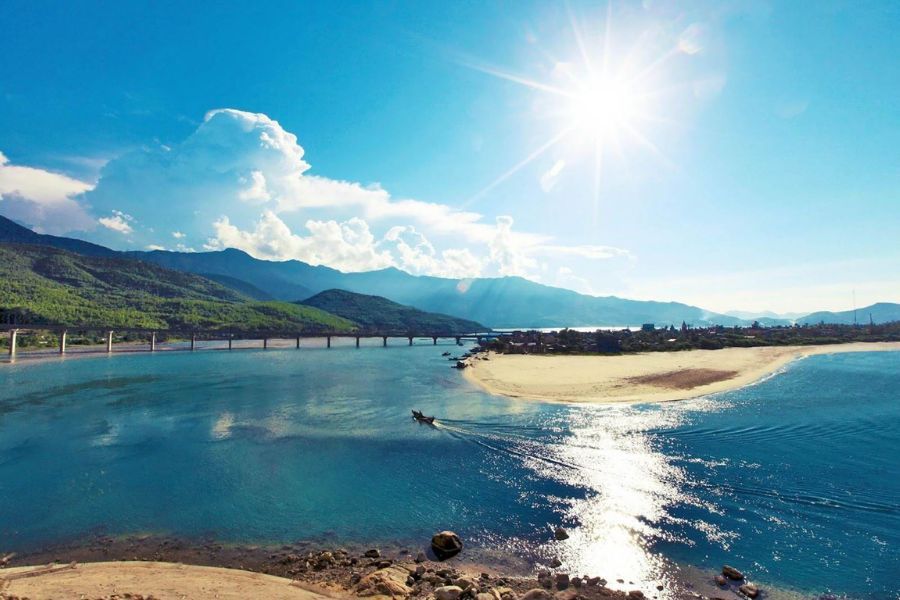Hue Imperial City: Cultural Heritage And Practical Information
Behind the ancient walls of Hue Imperial City lies the grandeur of Vietnam’s last royal dynasty. For travelers seeking culture, architecture, and history in one place, this former imperial capital promises an experience unlike anywhere else.
Table of Contents
ToggleIntroduction To Hue Imperial City
The Hue Imperial Citadel is one of the nation’s most significant historic sites. It was built during the early nineteenth century and was the political seat of the last ruling dynasty of Vietnam, the Nguyen Dynasty, until 1945. Located in central Hue, this site is made up of old palaces, temples, and inner citadel walls spread out over a sizable area. It is now part of the Complex of Hue Monuments, recognized by UNESCO.
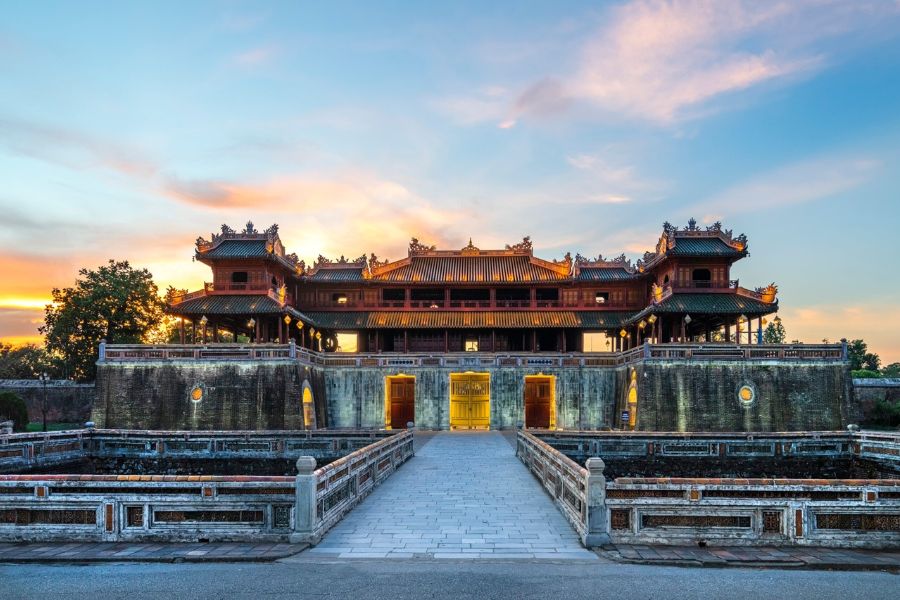
Many tourists come specifically to view the Imperial City in Hue. This site provides a direct connection to and experience of Vietnamese royal history that is not available anywhere else. It is conveniently located for visitors to access through many different levels of architecture and governance. If heritage is something you enjoy, Hue is a cultural must-stop along any trip across Central Vietnam.
History Of Hue Imperial City
Hue Imperial City was the royal capital of Vietnam during the Nguyen Dynasty, which lasted from the early 1800s to the mid-1900s. The emperors ruled the country from this complex for over a century. It was not only the political center but also the place where royal ceremonies, ancestor worship, and national decisions took place. The design followed Chinese traditions, with separate areas for the emperor, his family, mandarins, and soldiers.
Many buildings were damaged during the wars of the 20th century, especially in a major battle in 1968. After the war, the site was left in poor condition for many years. Since the 1990s, this Hue Imperial City UNESCO-listed site has been gradually restored through national efforts and international support. Today, the site includes both damaged remains and areas that have been carefully restored for public visits.
Top 6 Iconic Attractions In Hue Imperial City
The Imperial City covers a large area, with multiple gates, halls, temples, and inner courtyards. The following highlights are among the most important and well-preserved sites you’ll find on any Hue Imperial City map.
Ngo Mon Gate (Noon Gate)
The Ngo Mon Gate is the main southern entrance to the Imperial City and one of its most recognizable structures. Built in 1833 under Emperor Minh Mang, it was used exclusively by the emperor for important ceremonies and troop inspections. Today, visitors can walk through the gates and climb the upper level to enjoy a panoramic view of the Flag Tower and the surrounding moat. Its combination of stone base and wooden superstructure represents the grandeur of the Nguyen Dynasty architecture.
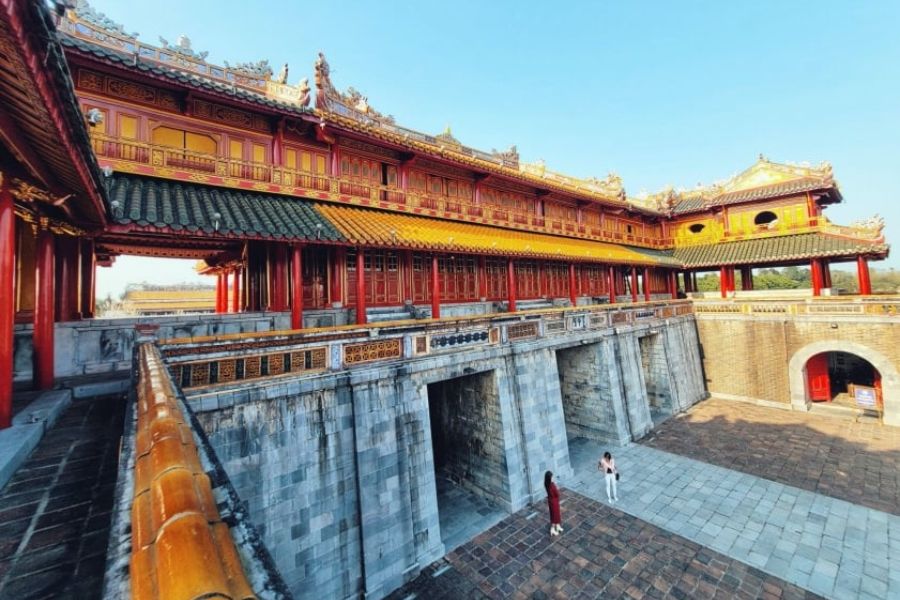
Thai Hoa Palace (Palace of Supreme Harmony)
Located just behind the Ngo Mon Gate, Thai Hoa Palace is one of the most important buildings in the Imperial City. It was used for official receptions and ceremonies such as the coronation of emperors. The hall is supported by 80 lacquered ironwood columns, all carved with dragon motifs symbolizing imperial power. Despite suffering damage during wars, the palace retains its original layout and decorative details.
Forbidden Purple City (Tu Cam Thanh)
The Forbidden Purple City used to be the residence of the emperor and his family, resembling the Forbidden City in Beijing. Most of the Purple City is currently under reconstruction, even though portions of it were destroyed during the French and American wars. Some of the reconstructed halls, remnants of the Dien Tho Palace (Queen Mother Residence), and royal gardens can still be seen by visitors. It is a better place to envision what the imperial court was like.
The To Temple (The Mieu)
The To Temple is a religious and festival place dedicated to the emperors of the Nguyen Dynasty. It has the altars of the nine Nguyen emperors, including the founder’s tablets and portraits of the ancestors. Visitors get access to the main hall, side houses, and a quiet courtyard in the Confucian tradition. It gives an idea of what royal rites are, another important spiritual aspect of the dynasty.
Duyet Thi Duong Royal Theatre
Built in 1826, Duyet Thi Duong is the oldest royal theatre still existing in Vietnam. It is located inside the Forbidden Purple City and was where the emperors and their court watched traditional performances such as tuong (classical Vietnamese opera). After being restored, this showcase of the cultural dimensions of the site was opened for live performances for visitors. This provided one of the few opportunities to experience how royalty experienced entertainment in the 19th century.
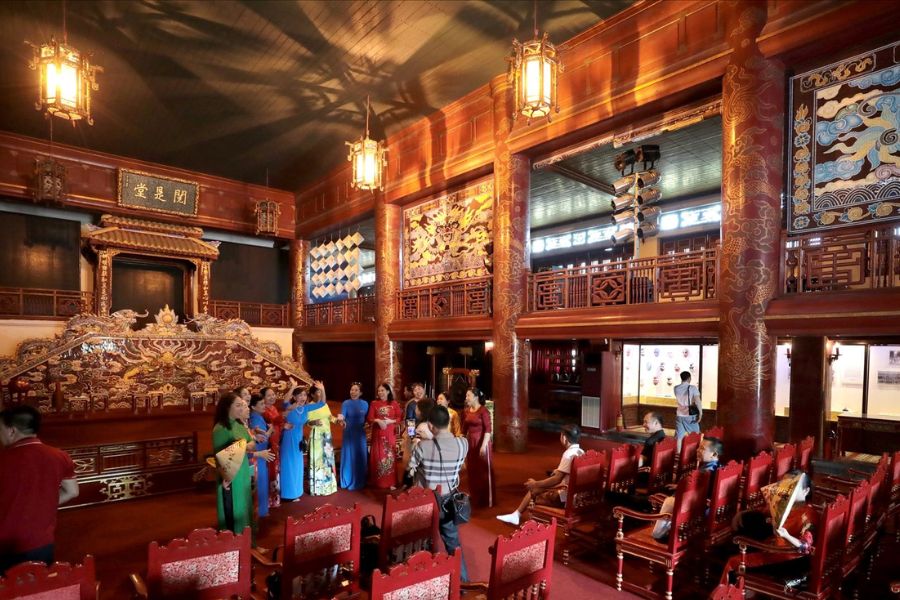
3 Cultural Experiences You Shouldn’t Miss
More than just architecture and royal history, the Hue Imperial City is a glimpse into the way of life, rulership, and court life of the Nguyen dynasty. These experiences are more about the understanding of the pace of court life.
Watch Traditional Performances At Duyet Thi Duong Theater
Duyet Thi Duong is Vietnam’s oldest existing royal theater (here, daily performances are offered of an ancient form of court opera, the classical opera). They are short, but enjoyable with a rich image; as dancers in embroidered costumes performed to traditional music, which used to be performed before the emperor alone. The visitors don’t follow along with the lyrics; they feel the energy, rhythm, and majesty. This is one place where the intangible heritage of Hue might be observed.
Observe Ancestral Ceremonies At The To Temple
On important lunar calendar dates, the To Temple turns into a vibrant worshiping ground for the cultural upholding of imperial traditions. The main ceremonial practices incorporate incense, burnt offerings, drum summons, and readings in Sino-Vietnamese in the traditional outfit. These are not touristic performances but real acts of respect which are associated with the Nguyen dynasty. Should you be so fortunate as to be on one of these days, it seems a very intimate and deep experience.
Visit The Royal Kitchen Area And Traditional Food Display
The old royal kitchen is located near the Forbidden Purple City and has been rebuilt to include exhibits of food preparation as it would have been done in the past. Visitors may see how royal food was arranged (which is a reproduction of the dishes served to emperors and queens). The difference between everyday food and festive food can be described in some of the exhibits. This area provides an overview of how food is used to denote status, season, and occasion.
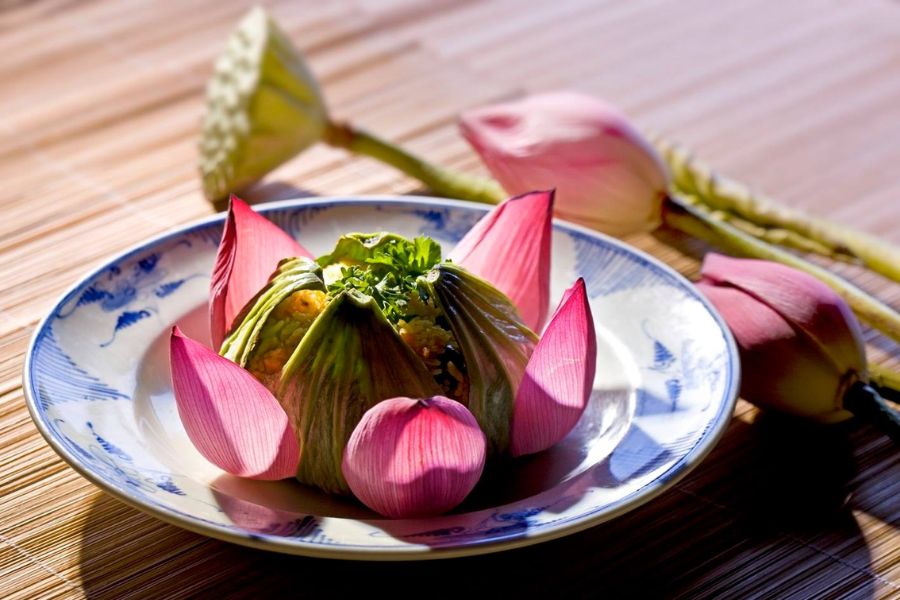
Entrance Fee
Tickets to Hue Imperial City can be purchased at the main gate and cover admission to all the main areas of the complex (e.g., Ngo Mon Gate, Thai Hoa Palace, The To Temple, and The Forbidden Purple City). There is a single entry ticket or a combination ticket that covers other royal tombs in the region around Hue. Any rate is given in Vietnamese dong (VND).
Tickets can be bought at the gate or by contacting some of the tour agencies that have them. Not all counters accept credit cards, and, therefore, cash is advisable. Occasionally, extra charges are levied for cultural performances or rides on an electric car, depending on schedule and availability.
Ticket Prices (as of 2025):
| Ticket Type | Price (VND) | Notes |
| Adults (foreign visitors) | 200 | Standard single-entry ticket |
| Children (7 – 12 years old) | 40 | Must show ID if needed |
| Children under 7 years old | Free | No ticket required |
| Vietnamese citizens (with ID) | 150 | Local rate applies only to Vietnamese nationals |
| Combination ticket (Imperial City + 2 tombs) | 420 | Includes entry to Imperial City, Khai Dinh, and Minh Mang tombs |
Opening Hours
The Hue Imperial City opening hours follow a daily schedule, with seasonal adjustments and occasional evening events. The site operates with set opening and closing times, but during certain peak tourism months or cultural festivals, hours may be extended in the evening. Last ticket sales usually stop 45 minutes before closing time, so arriving too late in the day is not recommended
Evening visits, when available, include decorative lighting and cultural shows, offering a different atmosphere from daytime tours. These nighttime events are announced in advance by local tourism boards or tour agencies. The best time to visit Hue, especially the Citadel, is from January to April when the weather is cooler and rainfall is low.
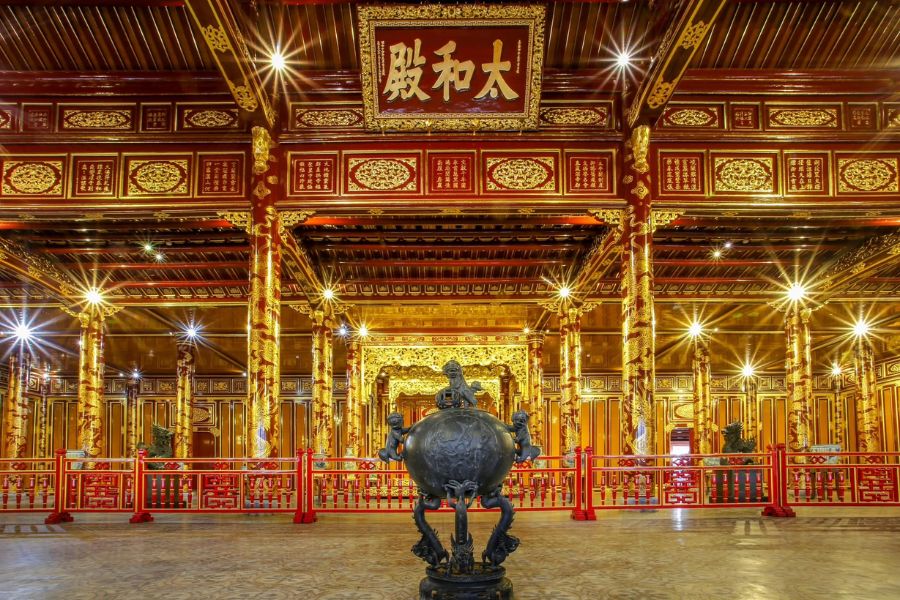
Daily Opening Schedule:
| Season | Hours | Notes |
| Regular season | 07:00 AM – 05:30 PM | Applies to most months |
| Summer peak (May-August) | 07:00 AM – 06:00 PM | Extended hours may apply on weekends |
| Special night opening | 06:30 PM – 09:00 PM (selected days) | Often during festivals or holidays |
How To Get To Hue Imperial City
Hue Imperial City is located in the center of Hue, just north of the Perfume River. Most visitors stay in the southern part of the city, near Le Loi and Vo Thi Sau streets, where hotels and restaurants are concentrated. From this area, it’s easy to reach the Imperial City by car, motorbike, or even on foot.
For travelers using motorbikes, a valid international or Vietnamese driver’s license is legally required. Most taxi and ride-hailing drivers are familiar with “Dai Noi” or “Imperial City” as destination names. If you’re walking, use the Truong Tien Bridge to cross the river, then follow the main road north to Ngo Mon Gate, the entrance to the site.
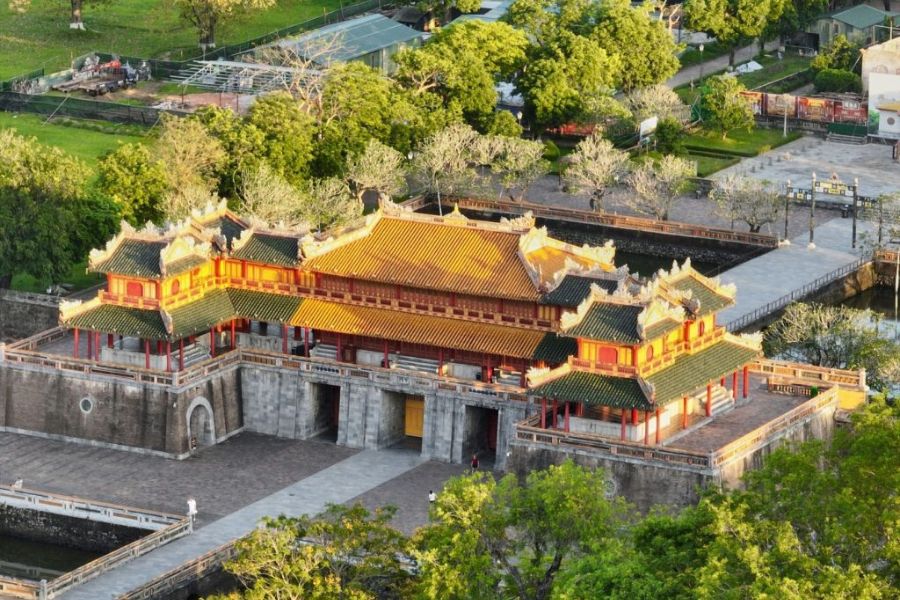
Popular Transport Options:
| Transport Method | Travel Time | Estimated Cost (VND) | Notes |
| Taxi / Grab | 5 – 10 mins | 40,000 – 70,000 | Taxis are available all day and provide a quick and comfortable ride. |
| Motorbike rental | N/A | 120,000 – 180,000/day | A valid motorbike license is legally required for foreign travelers. |
| Cyclo | 15 – 20 mins | 100,000 – 150,000 | Prices should be agreed in advance to avoid misunderstandings. |
| Walking | 20 – 30 mins | Free | This is a pleasant option in cooler weather but less ideal in summer. |
| Electric cart tour | Flexible | 150,000 – 200,000 | Often includes a short guided route around major tourist attractions. |
Things To Know Before Traveling To Hue Imperial City
Most visitors enjoy the site more when they come prepared. These practical tips will help make your visit smoother and more rewarding.
- Wearing comfortable shoes is essential, as the site covers a large area with uneven stone walkways, some of which become slippery after rain.
- It’s best to visit in the early morning or late afternoon to avoid harsh sunlight, especially from May to August when midday temperatures can exceed 35°C.
- Although English translations follow most signage, the historical information is limited, and a hired licensed guide or audio tour app can be used to add meaning to the objects you observe.
- There is not a lot of shade in many parts of the citadel, and, therefore, it is highly advisable to carry a hat, sunglasses, and sunscreen, particularly in the dry season.
- It is not permitted to fly a drone within the walls of the Imperial City without advance permission from local authorities.
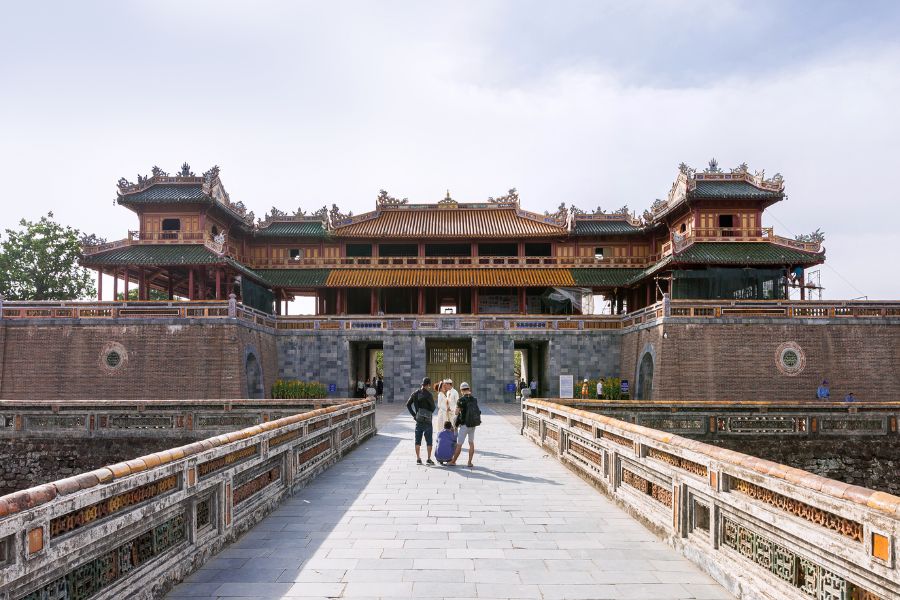
- There are a few cafés and rest areas inside the complex, but they may charge slightly higher prices than outside vendors, so carrying a water bottle is a good idea.
- If you plan to take photos inside temples or shrines, check for signage first, as some areas restrict photography out of respect for cultural practices.
- Night tours usually require a separate ticket and may not be available every day, so ask in advance if you’re visiting during the summer or festival seasons.
- Motorbikes are not allowed inside the complex, and parking is available outside the main gates with attendants on site.
- Some restored areas are still under construction or preservation, which means certain halls or gardens may be temporarily closed without prior notice.
Final Thoughts: Is Hue Imperial City Worth Visiting?
Hue Imperial City is one of those rare places where the deeper you look, the more you find. The site is well-organized, rich in detail, and easy to explore without a guide. It offers a clear window into Vietnam’s royal past and easily tops the list of things to do in Hue for history lovers. And if you’re looking for a smooth, well-planned cultural trip through central Vietnam, check out tour options from Seni World.










